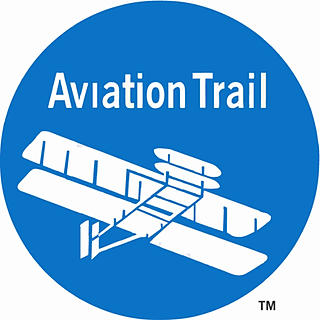Carillon Park - 75 Years
- Aviation Trail
- Jun 3
- 3 min read
Dayton, Ohio—Today, June 3, 2025, Carillon Historical Park—a 65-acre open-air museum—kicks off its 75th anniversary year, which will culminate this fall with the unveiling of a new master plan.
Opened on June 3, 1950, the Park—the brainchild of Col. Edward A. Deeds—was designed by the Olmsted Brothers, sons of Central Park designer Frederick Law Olmsted. It tells the story of how Dayton, Ohio, changed the world.
“From the airplane to the cash register to the automobile self-starter, Dayton once led the nation in patents per capita,” says Brady Kress, President and CEO of Carillon Historical Park. “Visitors often can’t believe how many commonplace inventions originated here, so we trademarked a simple phrase that says it all: ‘You can’t go a day without Dayton.’”
Home to the Wright Brothers National Museum, the Park holds the world’s most extensive collection of Wright family artifacts, including the 1905 Wright Flyer III—the first practical airplane, the only one designated a National Historic Landmark, and what Orville Wright considered the brothers’ most important aircraft.

The Deeds’ Gift to Dayton
In 1939, Edith Walton Deeds, an accomplished musician and wife of National Cash Register (NCR) Chairman Col. Edward A. Deeds, traveled to Bruges, Belgium. There, she fell in love with the toll of carillon bells; she dreamed of sharing their sound with Dayton. From 1940 to 1942, Edith oversaw the construction of a 151.5-foot limestone carillon, featuring 32 bells—23 active and nine silent. On August 23, 1942, Deeds Carillon was officially dedicated.
But Col. Deeds had an even bigger vision.
As an engineer, inventor, and business leader, Deeds worked alongside many of Dayton’s greatest minds, including Orville Wright, the world’s first pilot, and Charles Kettering, inventor of the automobile starter motor. Seeing that Dayton had given the world the airplane and, ostensibly, the contemporary automobile, Deeds dreamed of sharing his city’s staggering transportation history in an open-air museum that unfolded beneath his namesake carillon.
“From planes to trains to canals to automobiles, Dayton helped set the world in motion,” says Kress. “Deeds knew someone needed to save these great American stories for posterity, so he took it upon himself. The Park owes its existence to his foresight and generosity.”
In the late 1940s, Deeds began collecting artifacts, including a Miami and Erie Canal Lock; the oldest existing American-built locomotive, the 1835 B&O #1, John Quincy Adams; and the massive Corliss Engine that once powered NCR, the Dayton company that manufactured cash registers—another of the city’s inventions that reshaped the world.
A Story Still Being Written
Over the decades, Carillon Historical Park has steadily grown. In 1964, Dayton’s oldest-standing building, Newcom Tavern, was moved to the Park. In 1972, a replica of the Wright brothers’ fifth and final bicycle shop was built, eventually becoming part of the Wright Brothers National Museum. In 1992, the Wright Flyer III became a National Historic Landmark. And in 2004, a Sugar Camp/WAVES cabin was relocated to the Park. During World War II, over 600 Women Accepted for Voluntary Emergency Service (WAVES) lived inside these cabins while working on the top-secret Dayton Codebreaking Project, helping crack Nazi Germany’s Enigma Code and hastening the end of the war.
In 2010, the Park added the Heritage Center of Manufacturing & Entrepreneurship, highlighting Dayton-born industries, including NCR, Mead Paper, and Huffy Bikes. The 2010s and 2020s saw further growth: the Great 1913 Flood Building, Carillon Brewing Co., Brethen Tower, Winsupply Center of Leadership, Gem City Letterpress, the Carillon Park Railroad, and much more.
The Park continues to grow, but what’s most fascinating is its ongoing discovery of Dayton’s remarkable past. In recent years, it has unearthed stories even longtime Daytonians had forgotten—like how Dayton invented the Cheez-It, hosted the first NFL game, and that its first lawyer and judge, Joseph H. Crane, was the older brother of Ichabod Crane, the military officer who inspired the main character’s name in “The Legend of Sleepy Hollow.”
The stories keep surfacing. To preserve them—and to inspire generations by connecting them with the unique people, places, and events that changed Dayton and the world—Carillon Historical Park, a privately funded nonprofit organization, is celebrating its 75th anniversary by unveiling a new master plan later this year. For an organization built on history, the best may be yet to come.

Dayton History • 1000 Carillon Blvd. • Dayton, OH 45409 https://www.daytonhistory.org
_____________________
Carillon Historical Park is Site #4 on the Aviation Trail
___







Comments